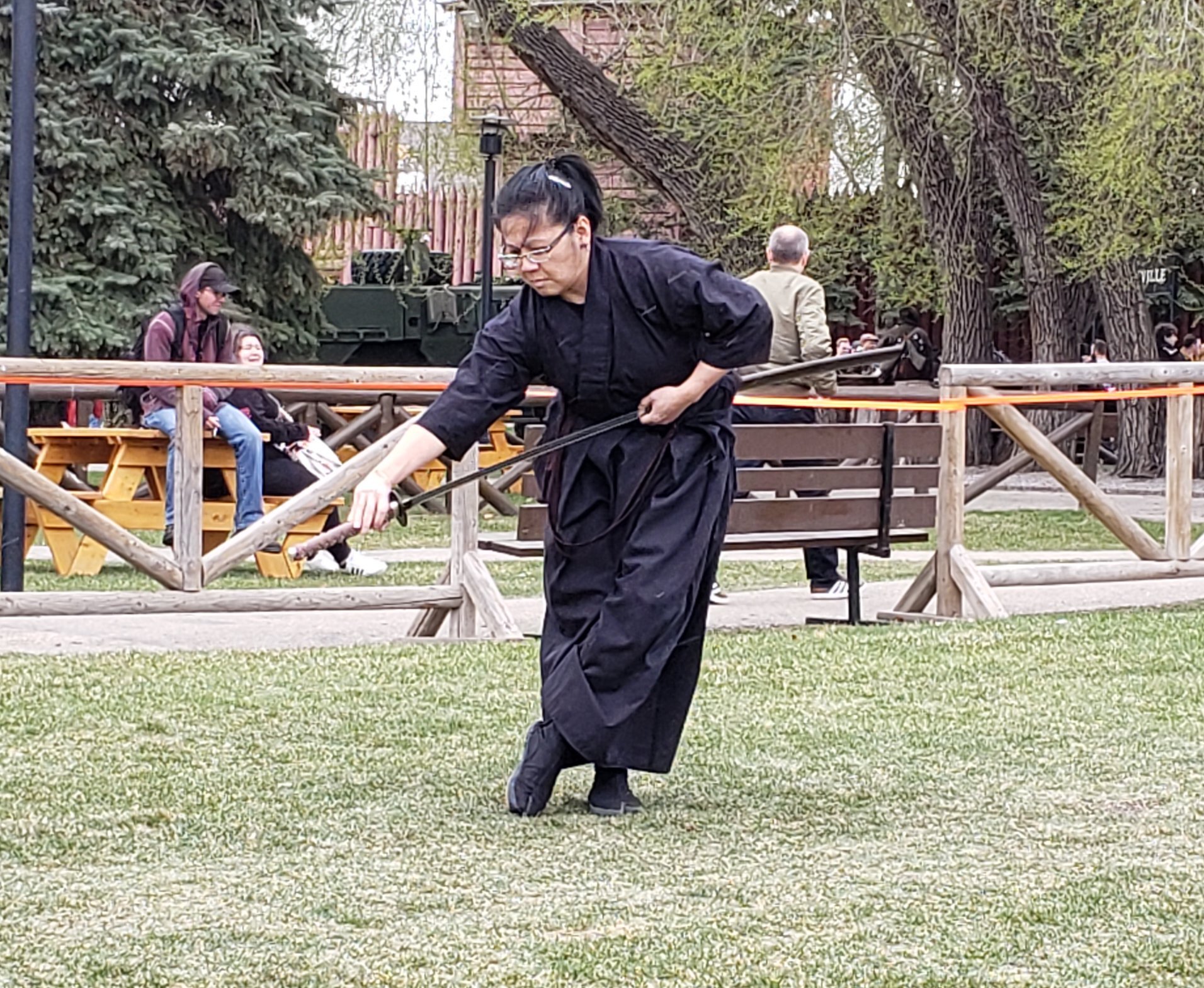Another one of my Suite101.com articles that got cut in The Big Purge. I'm not entirely sure why this one didn't make it but as you can see, not concerned enough to dispute it:
In times of war, samurai honed their swordsmanship skills on the battlefield. Iaido was developed as a means for samurai to maintain their skills during times of peace. Today, it is a martial art that attracts practitioners seeking moving meditation. Iaido is related to Kendo and Jodo.
Like its siblings, Iaido involves traditional Japanese weaponry. Unlike Kendo and Jodo, Iaido is a solitary, non-combative martial art. One common translation of the kanji for "Iaido" is the one used by Chris Gilham sensei of Ka Muso Kai: “the way of harmonizing one's self in action at all times and in all conditions.”
Iaido Clothing and Equipment
Iaido practitioners, called "iaidoka", begin training with a wooden practice sword (bokuto or bokken). As training progresses, they invest in an iaito, a dull-blade training sword. Advanced practitioners can use a shinken (live blade). Only iaito and shinken are allowed when grading. The Iaido uniform consists of a black gi, hakama and obi. The sheathed sword is inserted through the obi. The sheath (saya), is secured to the uniform by tying a silk or cotton cord (sageo), to the hakama.
Iaido Customs and Etiquette
The newest students in the dojo are responsible for set-up and clean-up of the training space. Upon entering the dojo, Iaido practitioners bow towards the shrine (shinzen or kamiza). While in the dojo, iaidoka traverse barefoot and in straight lines. They walk along the periphery of the dojo as a safety precaution.
The instructor is addressed as “sensei” (teacher) while the more senior students are called “senpai” (seniors). Junior members are called “kohai.” When responding to one another, practitioners respond affirmatively in Japanese. When greeting or thanking one another, iaidoka bow to each other as a sign of respect.
Iaido Training and Techniques
Iaido training is comprised of reiho (etiquette), warm-up exercises and kata (forms). Opening and closing reiho involve bowing to the shinzen, sensei and sword. Warm-up exercises include sword cuts in various positions. The sensei introduces a technique to a student and then leaves the student to practice. Periodically, the sensei and senpai check on a kohai's progress. Once a student masters a technique to the sensei's satisfaction, a new one is taught.
Iaido kata are patterns that represent everyday situations a samurai might have faced, such as drinking with someone who suddenly draws his sword. Iaidoka perform these kata while facing an imaginary opponent (teki). From a state of relaxed awareness and with the eyes focused on the horizon (metsuke), the Iaido practitioner reacts to an envisioned threat.
There are five parts to every kata:
Nukitsuke: drawing the sword and making the initial cut,
Furikaburi: raising the sword overhead,
Kiri-oroshi: killing cut,
Chiburi: shaking the blood from the blade and
Noto: re-sheathing the sword.
Each kata is completed by returning to one’s original position. Jo-ha-kyu is integral to the rhythm-timing in Iaido. Forms should be executed with fluidity, efficiency and precision, all while the practitioner's eyes are focused on the opponent.
There are 12 forms in the Seitei Iai Gata: mae, ushiro, uke nagashi, tsuka ate, kesa giri, morote zuki, sanpo giri, ganmen ate, soete zuki, shiho giri, sou giri and nuki uchi. After mastering these kata, Iaido practitioners learn older styles of Iaido, such as koryu and okuden.
Iaido practitioners can participate in tournaments and grading. The All-Japan Federation adopted a -kyu ranking for lower levels and a -dan ranking system for grading black belt levels in Iaido. Many federations, such as the Canadian Kendo Federation, the British Kendo Federation and the All United States Kendo Federation, follow this system.
History of Iaido
Iaido can trace its roots to a Japanese swordsman named Hayashizaki Jinsuke Minamoto no Shigenobu, who lived from 1546 - 1601. His sword techniques were called Batto-Jutsu, Shin Muso Hayashizaki Ryu, Junpaku Den, Shigenobu Ryu and Iai-jutsu.
Upon Hayashizaki's death, his style was carried on by the first Soke (headmaster), Tamiya Taira-no-Hyoe Narimasa, who instructed Tokugawa Ieyasu. By the eleventh Soke, two distinct sword styles emerged: Shimomura-ha and Tanimura-ha. These later evolved into Muso Shinden Ryu and Muso Jikiden Eishin Ryu, two popular styles of Iaido today. The term "Iaido" was first used by grand master Nakayama Hakudo in 1932. He was involved with codifying the techniques for both schools.
Once a means for samurai to maintain their swordsmanship skills during times of peace, Iaido is now a non-combative martial art. Although it is a sword-based art, Iaido is a form of meditation in motion, in which the practitioner strives to reach "mushin" (no-mindedness).
Sources:
Chris Gilham sensei (4th dan), Colin Pitman (4nd dan) and Alex Cook (4nd dan) of Ka Muso Kai.
Aukland Kendo Club: History of Iaido (accessed June 30, 2010).
Fighting Arts: Iaido (accessed June 30, 2010).
Fighting Arts: From the Beginning: The Importance of Reishiki in Iaido (accessed June 30, 2010).
The Iaido Journal: An Introduction to Iaido: Its Purpose and Benefits (accessed June 30, 2010). Copyright Rhona-Mae Arca, 2010. All rights reserved.



